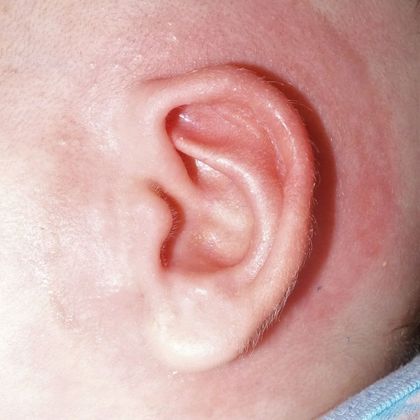As an accomplished plastic surgeon, Dr. Jandali offers non-surgical ear molding treatment for some infants with type 1 and type 2 microtia at his practice locations in Connecticut. Dr. Jandali seeks to educate parents so they can pursue the safest options for newborns and babies with mild microtia.
Ear Molding For Mild Microtia
Microtia is a congenital condition where the ear is not completely formed. It may occur by itself or can be one of the features of a more complex congenital syndrome, such as hemifacial microsomia or Treacher-Collin’s syndrome. There are various classification systems for microtia, which grade it based on the severity of the deformity.
Types of Microtia
Type 1 Microtia: Type 1 microtia, or mild microtia, is a mildly deformed ear that is slightly small in size or height. The external auditory canal (ear canal) and all major parts of the ear are usually present.
Type 2 Microtia: Type 2 microtia describes ears with all significant structures present to some degree, but there are deficiencies in the tissues, cartilage, or skin.
Type 3 Microtia: In severe cases, type 3 microtia describes ears with few or no recognizable parts of the outer ear and ear canal.
Type 1 and 2 microtia can cause abnormalities of the outer ear parts’ size, shape, and location, including:
- Constricted Ear Deformities: The outer rim of ear cartilage (helical rim) is tight and constricted.
- Lop Ear Deformities: The anti-helical fold (the cartilage fold inside the outer rim cartilage) is absent, causing the ear to fall forward.
- Lidding Ear Deformities: The top of the ear folds downward.
- Cup Ear Deformities: Excess cartilage in the ear canal or an enlarged concha (the shell-shaped middle part of the outer ear) causing the ear to project forward excessively.
Non-surgical Correction of Small Ears in Babies with Microtia
Type 1 and type 2 can sometimes be improved with non-surgical ear molding, while type 3 will require surgical treatment. While surgeries can correct many significant forms of microtia, mild forms often found in type 1 and type 2 can benefit from non-surgical treatment because it provides the ear with a natural appearance, helps avoid scars along the side of the head, and can potentially help improve your baby’s hearing.
As a non-surgical, painless method to improve the appearance of mild microtia, ear molding involves your newborn wearing custom-fitted silicone molds 24 hours a day, seven days a week, until treatment is complete. With use of a silicone prosthesis, the ears are gradually stretched to mold the skin and cartilage of the outer ear. The mold works by gently stretching the ear skin and cartilage. The ear mold adheres to the skin of the scalp and cheek around the ear with medical-grade tape. Within as little as 6 to 8 weeks, your baby’s ears should have an improved shape, as long as the process is started early after birth.
Microtia Gallery
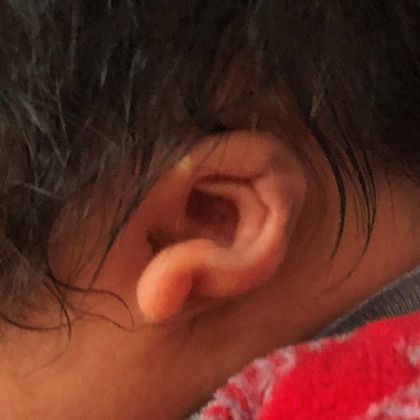
Mild Type 1 Microtia
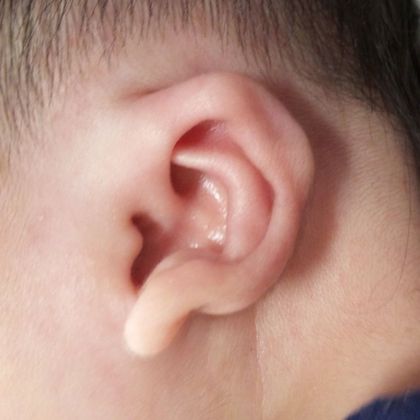
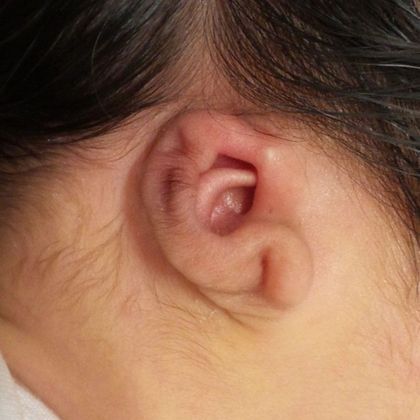
Mild Type 1 Microtia
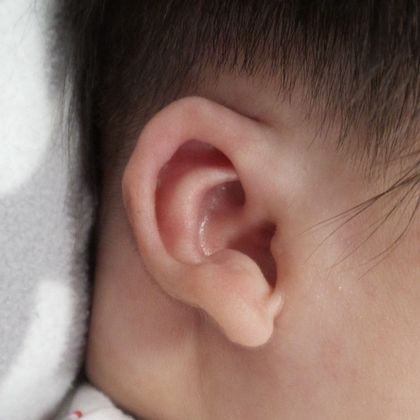
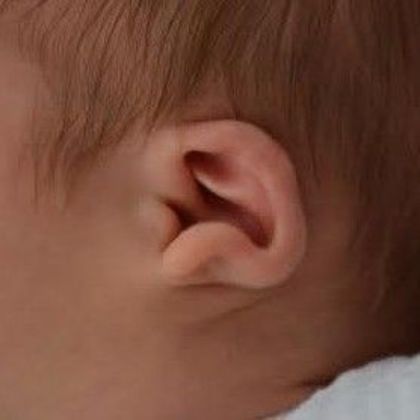
Mild Type 1 Microtia
